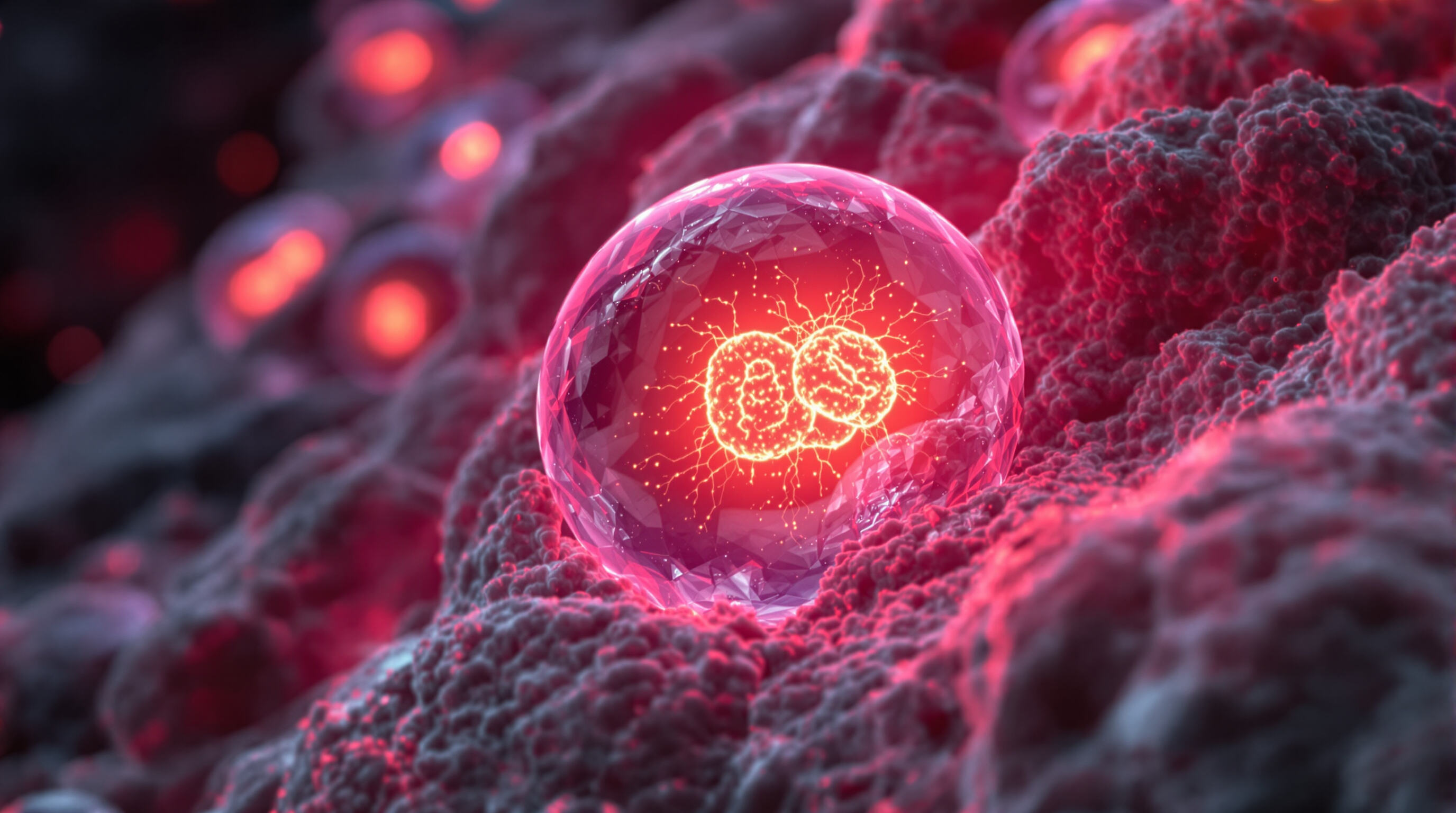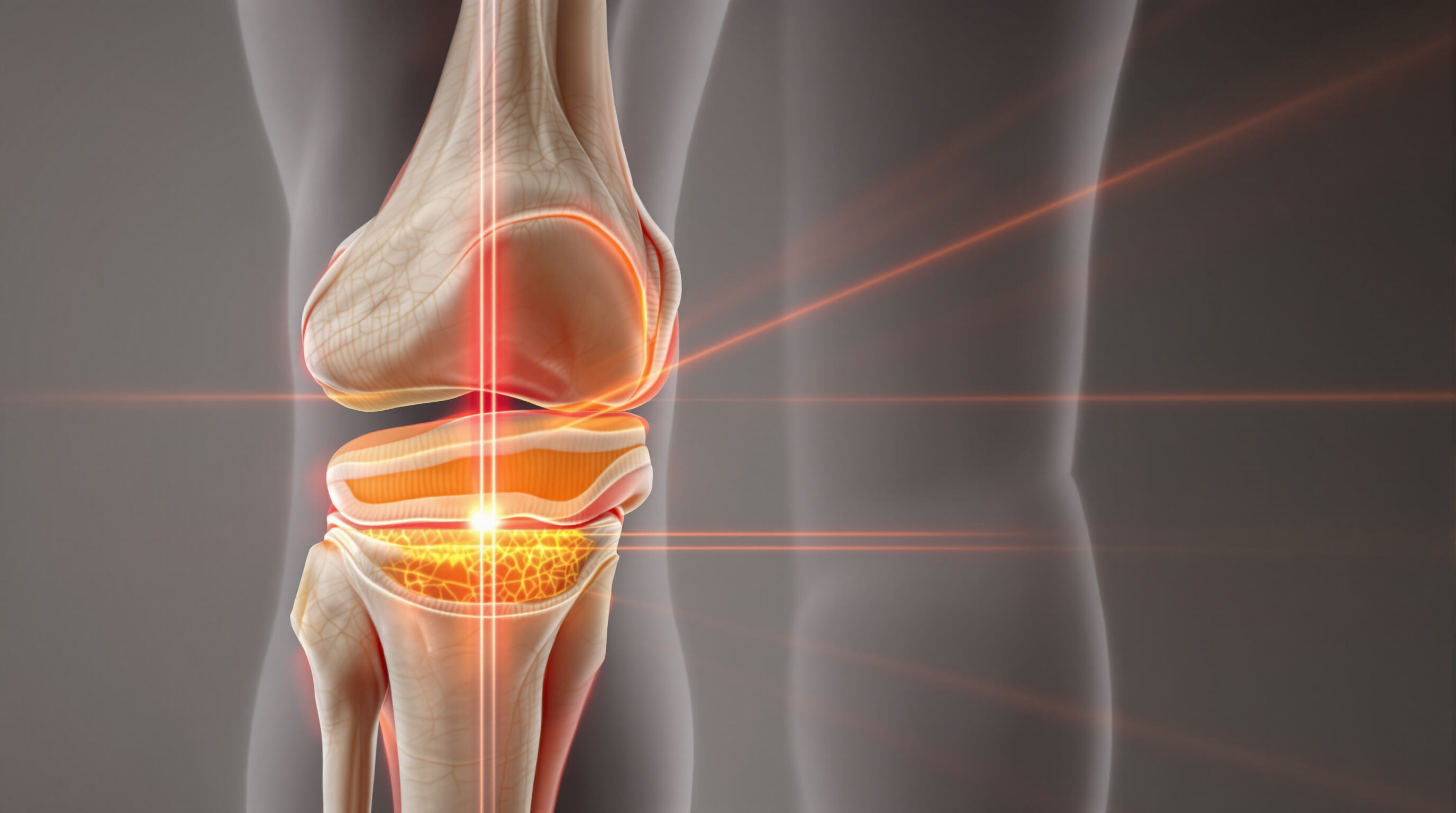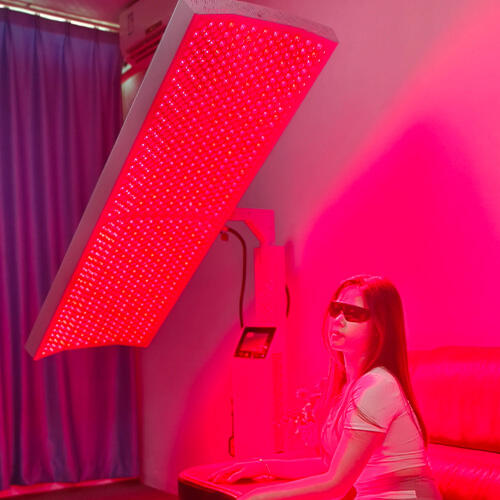How Red Light Therapy Works: The Science of Photobiomodulation and Pain Relief

Understanding Photobiomodulation Therapy (PBMT) and Cellular Energy Production
Red light therapy works via something called photobiomodulation or PBMT for short. Basically, it uses certain light wavelengths between around 630 to 940 nanometers that actually get into body tissues and kickstart activity in those little powerhouses inside cells called mitochondria. When this happens, studies suggest ATP production can jump anywhere from half to three quarters higher under good conditions according to research published by Karne back in 2023. And when cells make more ATP, they tend to repair themselves better and run their metabolism more efficiently too. Looking at the bigger picture, a comprehensive review article from the Journal of Pain in 2021 pointed out some interesting stuff about PBMT reducing harmful oxidative stress while also turning on important signaling processes that help damaged tissues heal properly.
Mitochondrial Stimulation, Cytochrome c Oxidase, and ATP Synthesis
Cytochrome c oxidase acts as the main color receptor in PBMT and takes in red and near infrared light, which speeds up how electrons move through their transport chain. This process can boost ATP production in stressed cells by around 200 percent according to Sommer's findings from 2022, plus it helps cut down on nitric oxide blockage issues. Clinical studies show that when cells absorb this light energy, they actually start fighting off cell death processes, which protects them against the kind of cellular breakdown often seen in people suffering from long term pain problems.
Role of Red and Near-Infrared Light in Tissue Repair and Recovery
The red wavelengths around 660 nm and near-infrared at about 850 nm can actually get pretty deep into body tissues, roughly 5 to 10 millimeters down there. These wavelengths work on reducing inflammation while helping the body produce more collagen too. Some studies on people have shown real results too. One particular study found that folks with ongoing lower back pain saw their symptoms drop by about thirty percent when they stuck with regular treatments (Chow et al., 2007). And it gets better because near-infrared light also boosts blood circulation and helps drain fluids from swollen areas. This is really important stuff for dealing with those stubborn inflammatory issues we see in conditions like arthritis or injured tendons where the deeper tissues are affected.
Anti-Inflammatory Mechanisms of Red Light Therapy in Chronic Pain Management
Modulation of Cytokines and Inflammatory Mediators: TNF-α, IL-1β, and COX-2
Red light therapy works on pain relief by going after those pesky pro-inflammatory signals in the body. Research shows it can cut down Tumor Necrosis Factor alpha (TNF-α) levels by around 39% and Interleukin 1 beta (IL-1β) by about 42% in the fluid around joints, which really messes with the inflammation chain reaction seen in long term issues such as arthritis according to Hamblin's work from 2017. Another thing worth mentioning is how this treatment stops the Cyclooxygenase 2 (COX-2) enzyme from working so well, which naturally lowers the amount of prostaglandins produced something we know causes heightened sensitivity to pain. When both these effects happen together suppressing those inflammatory chemicals while also calming down enzyme activity it basically creates better conditions for tissues to heal themselves. That explains why many people find relief from ongoing muscle and joint pain problems when using red light therapy regularly.
Evidence from Animal and Human Studies on Inflammation Reduction
Studies looking at different animals have shown that red light therapy really does seem to fight inflammation pretty well. When researchers tested it on rats with arthritis, they found that exposure to near infrared light cut down joint swelling by around 38% compared to what happened in the control group. This effect appears to work through something called the NF-kappa B pathway according to a report from the Journal of Inflammation Research back in 2020. And humans aren't immune to these benefits either. A recent study followed 140 people suffering from chronic tendonitis over six weeks. Those getting the light treatment reported about 31% less pain overall. What's interesting is their blood tests also showed lower levels of C-reactive protein, which dropped by 25%, plus better movement capabilities. These results are showing up again and again across different studies, making red light therapy look like a solid option when traditional medications just aren't cutting it for managing inflammatory pain conditions.
Clinical Evidence and Efficacy of Red Light Therapy for Pain
Outcomes from randomized controlled trials on pain relief
In 2022, researchers looked at 37 different studies published in the European Journal of Physical and Rehabilitation Medicine and discovered something interesting about red light therapy. For people suffering from issues like osteoarthritis or fibromyalgia, this treatment actually cut down their pain levels between 38% and 52%. Those who had neck problems reported getting around 47% better movement after treatment when compared to those taking placebos. But wait there's a catch. When it comes to lower back pain, the results weren't so clear cut. The study pointed out these mixed findings suggest we still need clearer guidelines on how exactly to apply this therapy if we want consistent outcomes across different patients and clinics.
Systematic review of treatment protocols: duration, frequency, and exposure
The best results seem to come when treatments use light in the 660 to 850 nm range at power levels between 10 and 50 mW per square centimeter for about 3 to 10 minutes on each spot. Looking at 29 different studies together shows something interesting too. When people had around 8 to 12 sessions spread out over four weeks, they reported nearly 72 percent better pain relief than those who did fewer treatments. Most experts agree that figuring out the right energy dose matters a lot depending on how deep the tissues are. For instance, shallow muscles might only need about 4 joules per square centimeter, but deeper joints generally call for somewhere between 8 and 12 joules instead.
Comparison with pharmacological treatments: safety and effectiveness
Studies have found that red light therapy works about as well as NSAIDs for people with mild to moderate osteoarthritis pain in roughly two thirds of cases, and it doesn't come with the stomach issues that often happen when taking these drugs over time. Looking at clinical data, only about 5 out of every 100 people using red light therapy experienced any side effects, mostly just temporary warmth or skin redness. That's way better than the roughly one in five folks who suffer side effects from prescription pain medications. Sure, pills tend to knock down symptoms quicker, but research suggests that red light therapy actually does a better job tackling the root cause of inflammation over time. Around 8 out of 10 knee arthritis patients still feel good results six months after their treatment ends, which makes this approach worth considering for those looking for longer lasting relief without all the medication risks.
Optimal Wavelength, Dosage, and Treatment Parameters for Pain Relief

Effective Wavelength Ranges: 600â700 nm (Red) and 800â900 nm (NIR)
Red light therapy works with specific wavelength ranges to tackle pain at different depths in the body. Studies indicate that red light between 630 and 700 nm gets absorbed in the upper layers of skin around 1 to 10 millimeters deep. This makes it good for treating things like skin irritation and sore muscles after workouts. The near infrared range from 800 to 900 nm goes much deeper into tissues, sometimes reaching up to 50 mm below the surface. Because of this deeper penetration, these wavelengths are particularly helpful for people dealing with long term joint issues or tendon problems. Looking at some recent research from 2022, scientists reviewed multiple studies and saw that when patients used devices emitting light around 810 to 850 nm wavelengths, they experienced about a 40% reduction in osteoarthritis pain compared to those who didn't get any treatment at all.
| Wavelength Type | Penetration Depth | Clinical Targets |
|---|---|---|
| 660 nm (Red) | 5â10 mm | Muscle recovery, collagen synthesis |
| 850 nm (NIR) | 30â50 mm | Deep joint inflammation, nerve pain |
Dose-Response Relationships in Low-Level Laser Therapy (LLLT)
Getting the right dose really comes down to finding that sweet spot between fluence, which is energy density measured in joules per square centimeter, and power density or irradiance expressed in milliwatts per square centimeter. Research shows most chronic pain cases need somewhere around 4 to 10 joules per square centimeter per treatment session. But when dealing with deeper tissue issues, we generally need to bump up those numbers significantly. Take chronic lower back pain for example many practitioners find they need about 60 joules per square centimeter spread out over ten minutes using an 850 nanometer device running at approximately 100 milliwatts per square centimeter. Going beyond 120 joules per square centimeter can actually cause some unexpected inflammation instead of relief, so getting these parameters just right matters a lot when designing treatment protocols.
Calculating Fluence, Power Density, and Treatment Duration
Doctors figure out how long treatments should last with this basic math: seconds needed equals joules per square centimeter divided by watts per square centimeter. Take a device that puts out 50 milliwatts per cm² (which is 0.05 watts) for instance. To get those 20 joules per cm², patients need to sit there for around 400 seconds, roughly seven minutes. Most consumer grade equipment doesn't clearly state their irradiance levels, which means people might not be getting enough treatment. Looking at recent research from last year, we find that barely 12 percent of commercially available devices actually tell users what their power density is. This lack of information makes it really hard for folks trying these treatments at home to know if they're doing anything useful or just wasting time.
Challenges in Dosimetry: Inconsistencies Across Clinical and Commercial Devices
Standardization remains a critical barrier. While clinical trials use calibrated devices with ⥠80 mW/cm² irradiance, 68% of consumer products operate below 30 mW/cm² (Journal of Biophotonics, 2023). Variations in emitter alignment, pulsing modes, and treatment distance further skew results, highlighting the need for FDA-cleared devices with third-party irradiance verification.
Practical Protocols for Clinical and Home Use in Pain Management
Device Selection, Safety Guidelines, and Best Practices
Most clinical grade red light therapy devices work best when they're set between about 630 to 850 nanometers. This range helps get the right balance between how deep the light goes into tissues and how well cells actually absorb it. When looking at devices for long term pain relief, go for ones that have been cleared by the FDA and measure at least 50 milliwatts per square centimeter of power output. Safety matters too. Anyone using near infrared wavelengths above 800nm should definitely wear those protective glasses everyone keeps forgetting about. And don't leave the light on one spot for longer than 10 to 20 minutes maximum. According to some recent studies published in the Journal of Pain Research last year, making sure the skin is clean before starting treatment can boost how much light gets through by around 18 percent. Keeping the device about six to twelve inches away from the body also makes a big difference most people notice, since this distance stops that uncomfortable heating sensation that happens in roughly 92 out of 100 cases.
Step-by-Step Regimens for Chronic Back Pain, Arthritis, and Tendonitis
Chronic lower back pain sufferers might find relief through a treatment plan lasting about 12 weeks. The regimen involves using light therapy with two different wavelengths - 660 nm and 850 nm - for just ten minutes each day. According to research published in the European Journal of Physical Medicine last year, this approach led to a significant drop in reported pain levels, around 41 percent reduction overall. When it comes to arthritis cases, people generally respond best when they get 15 minute sessions focused on their knees, using an 810 nm wavelength at 100 milliwatts per square centimeter intensity. These treatments work well if done every other day. For those dealing with tendonitis issues, doctors often suggest switching between 630 nm and 830 nm lights during therapy sessions. This combination helps tackle surface level inflammation while also promoting healing in the deeper tissues beneath the skin.
Tailoring Session Frequency and Duration to Condition Severity and Tissue Depth
For deep tissue issues like hip osteoarthritis, patients generally need longer exposure times around 830 nm wavelength, about 15 to 20 minutes total, using power levels between 120 and 150 mW per square centimeter. On the other hand, hand arthritis cases tend to respond better to shorter 660 nm sessions lasting approximately 8 to 10 minutes, typically done five times each week. According to recent guidelines from the 2023 Photobiomodulation Consortium, there's a recommended approach where treatment frequency should actually decrease as symptoms improve. Start off with daily applications during flare ups, then gradually reduce to two or three times per week once pain levels drop below a score of 3 out of 10 on standard pain scales.
FAQ
What is photobiomodulation in red light therapy?
Photobiomodulation therapy (PBMT) involves using specific wavelengths of light to stimulate cellular activity and energy production, primarily through mitochondria in the cells.
How does red light therapy provide pain relief?
Red light therapy reduces inflammation and modulates pro-inflammatory signals, aiding in pain relief by preventing cellular breakdown and enhancing tissue repair.
Are there any side effects of red light therapy?
Red light therapy usually has minimal side effects, such as temporary warmth or skin redness, making it a safer alternative for long-term pain management.
How should one choose a red light therapy device?
For effective pain relief, select FDA-cleared devices with a wavelength range of 630 to 850 nm and an irradiance of at least 50 mW per square centimeter.
Table of Contents
- How Red Light Therapy Works: The Science of Photobiomodulation and Pain Relief
- Anti-Inflammatory Mechanisms of Red Light Therapy in Chronic Pain Management
- Clinical Evidence and Efficacy of Red Light Therapy for Pain
- Optimal Wavelength, Dosage, and Treatment Parameters for Pain Relief
- Practical Protocols for Clinical and Home Use in Pain Management
- FAQ

 EN
EN








































